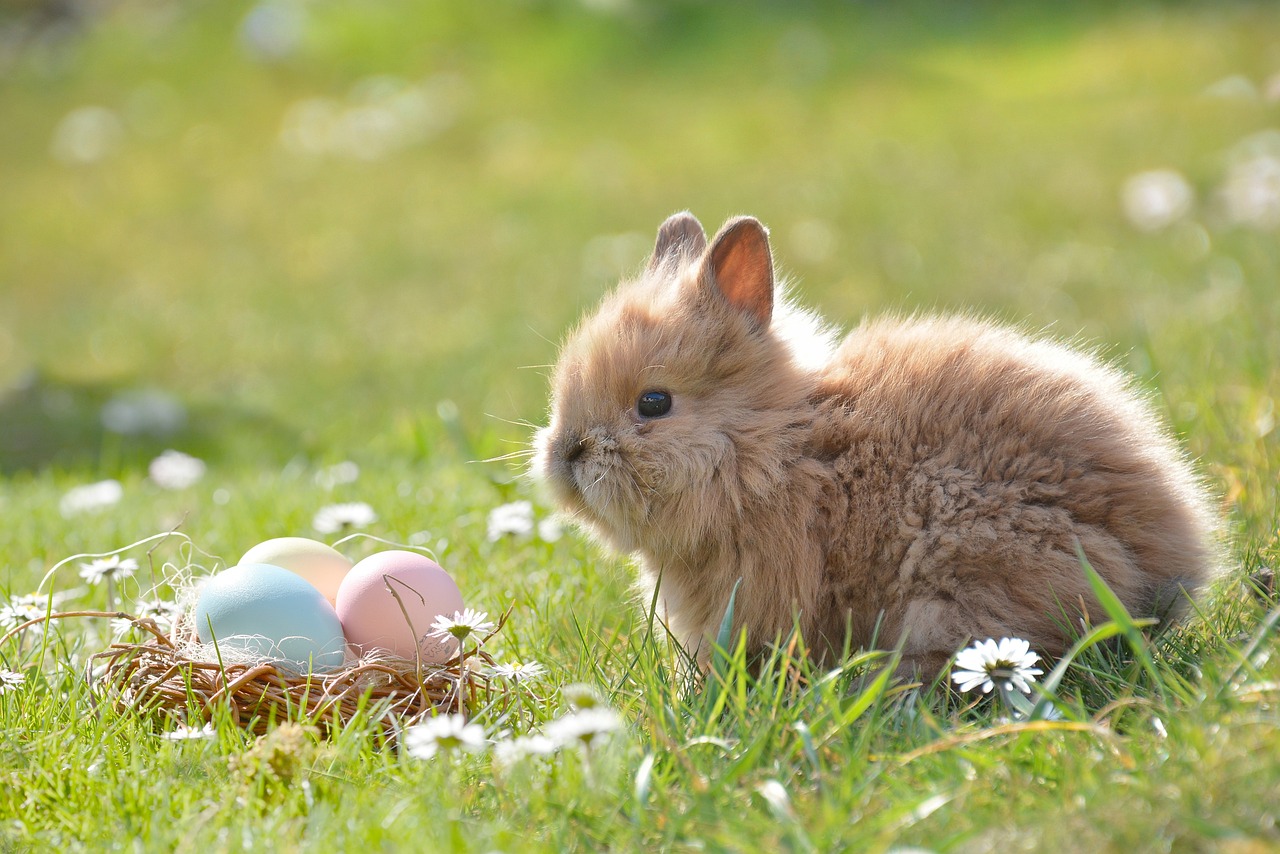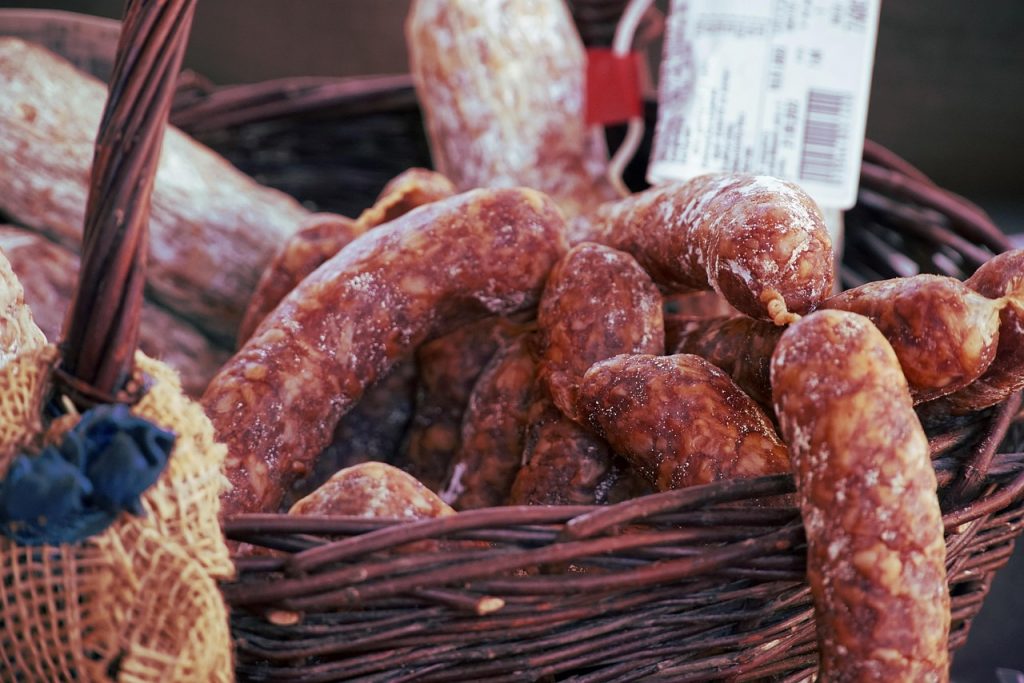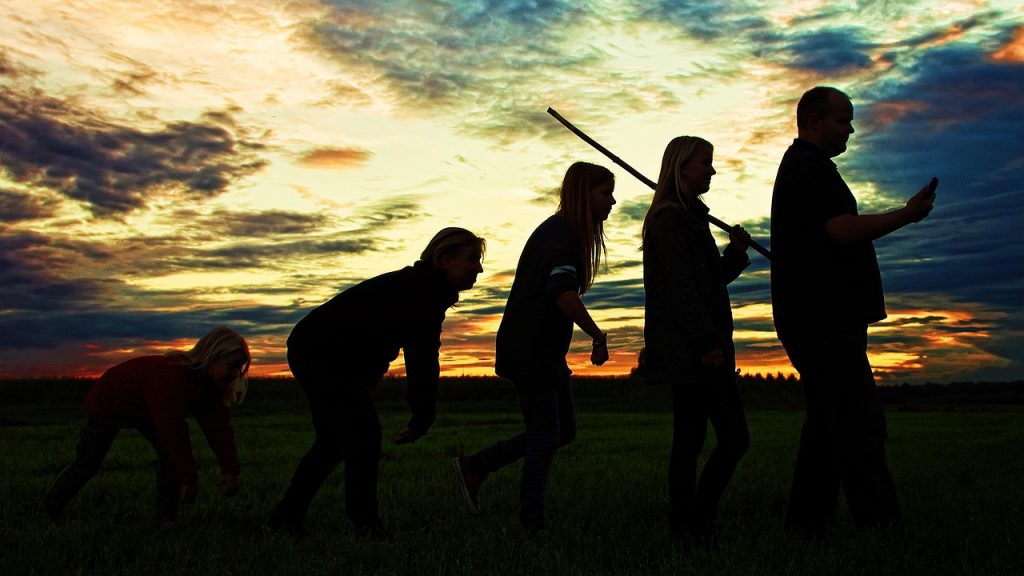For centuries, various customs and symbols have been associated with Easter, some of which have survived in a different form. Some of them, such as the ratchet and the epitaphios, a liturgical blanket, are only common in individual Christian denominations.
The rabbit, Easter lamb and egg are probably the best-known Easter symbols. However, there are also numerous other traditions for the main festival in the Christian church year, such as the palm bush, ratcheting and the Easter food blessing, which is popular in rural areas. While the blessing of food is known in many Christian traditions, the ratchet is primarily a Catholic tradition.
In the background is the mourning over the suffering of Jesus from Thursday evening, symbolised by the church bells “flying” to Rome and not ringing again until the Easter Vigil. The ratchets replace the missing bells at midday, and for the evening, the vespers peal. In the tradition of Romanian Orthodox Christianity, these are not known, but the epitaphios is a liturgical blanket on which the burial of Jesus is embroidered. The epitaphios is placed on a table and is central to a special rite.
Participation in the burial of Jesus
As Cezar Marksteiner-Ungureanu, social ethicist and pastor of the Romanian Orthodox parish in Krems an der Donau and Stockerau in Lower Austria, tells religion.ORF.at, this rite is also performed in the Romanian Orthodox parishes in Austria. The table decorated with the epitaph symbolises the tomb of Jesus and is adorned with flowers by the faithful. On the morning of Good Friday, it is placed in the centre of the church; in the evening, the faithful walk under the table bent over. In this way, they symbolically take part in the burial of Jesus.
The liturgical blanket is embroidered with the burial of Jesus
According to Marksteiner-Ungureanu, the rite also represents a kind of reparation because, according to biblical tradition, the burial of Jesus had to take place in a hurry. The Romanian Orthodox community’s ritual now involves the faithful accompanying Jesus “calmly, piously, and respectfully on his way to burial.” Marksteiner-Ungureanu explains that the ritual is widespread in Romania: “Many people take part in it, regardless of how devout they are.”
A long tradition of Easter eggs
Decorated, dyed Easter eggs, on the other hand, are familiar to all Christian denominations—as jewellery and as food intended for consumption. Even before Christianity, the egg was seen as a symbol of awakening life. In Christianity, the symbol was adopted and interpreted to mean the resurrection of Christ from the dead. According to one interpretation, just as the chick breaks through the shell, Jesus emerges from the rock tomb alive.
In many traditions, the egg symbolises the awakening of life
Another says that Mary Magdalene bribed a wax soldier with an egg so that she could enter Pilate’s house and take part in the trial of Jesus. As people used to abstain from eating animal foods during Lent, the egg (“liquid meat”) became the much-awaited Easter gift. The eggs saved during Lent were also used as currency in some areas.
The Easter bunny
It is still unclear how the Easter Bunny came to be an egg. What is known is that it appears in Egyptian mythology as a symbol of fertility. It was first mentioned in writing in connection with Easter in 1682. According to an explanation in Friedrich Kluge’s “Etymological Dictionary,” the hare is a misunderstood transformation of the Easter lamb.
However, the connection with Easter could also come from the fact that it was long believed that hares sleep with their eyes open, so they are often seen as a symbol of Christ, who, having returned from the dead, will never “fall asleep” again. Another explanation is based on the animal’s fertility, which indicates the indestructibility of life and, therefore, the resurrection.
The origin of the Easter Bunny tradition is unclear.
Today, the chocolate Easter bunny is a popular Easter gift and part of the Easter basket, traditionally hidden in some families on Easter Sunday. As Marksteiner-Ungureanu says with regard to the Romanian Orthodox community, the Easter bunny is usually an important topic for children: “In places where Easter is not celebrated as a religious festival, the Easter bunny perhaps plays an even more important role.”
Lamb as life insurance
The lamb has been a symbol of life for thousands of years. As it provided food and drink, clothing, and material for drums, horns, and stringed instruments, it was long regarded as a “good sacrificial animal.” Biblical evidence for this includes the story of the prophet Isaiah and John the Baptist, who describes Jesus as the “Lamb of God”.
The depiction of Jesus as the “true Paschal lamb” (Easter lamb) in the letters of Peter and Paul in the Bible characterises Jesus as the epitome of life. He represents food, drink, freedom, and reconciliation with God.
In Christianity, the lamb as a symbol of Christ’s resurrection led to the custom of baking Easter lambs as a symbolic bread in the shape of an Easter lamb. To this day, the baked sponge cake lambs are brought to consecrate food or meat during Easter celebrations, especially in southern Austria.
Palm branches, Easter shrub and horseradish
In addition to animals, plants are firmly integrated into the Easter celebrations, including palm bushes and palm fronds. The origin of the Christian custom goes back to the biblical accounts of Jesus entering the city of Jerusalem on a donkey as the “King of Peace”. The people cheered him with palm branches, which were seen as a sign of homage and victory in Judaism.
Palm bushes are consecrated on Palm Sunday in remembrance of this. In some communities, the custom of carrying a life-size wooden donkey with a figure of Christ on it during the Palm procession still exists. Without direct reference to the Bible, the custom of the Easter bush has also become established. The branches of willow catkins, cherries, or golden forsythia, originally from China, are traditionally cut several days before Easter and placed in the house to blossom or sprout green leaves at Easter.
Colourful Easter eggs and chocolate bunnies
They symbolise fertility, spring triumphing over the cold and the blossoming of life. Blown-out, coloured and often artistically decorated or carved eggs are hung on it.
“Hallelujah snack” and the end of Lent
The roots of the blessing of Easter foods go back to the 7th century. Easter bread, ham, Easter eggs, horseradish, salt, and herbs are traditionally found in the baskets that are brought to the Easter Vigil liturgy on Holy Saturday and blessed there, while the contents often find their final destination in the Easter snack, or “Hallelujah snack,” that follows. The blessing of the Easter meal is celebrated at the end of Lent and is a reminder of the meals that Jesus shared with others.
- Hector Pascua/references: orf.at/vivat.de/picture:
This post has already been read 2654 times!



